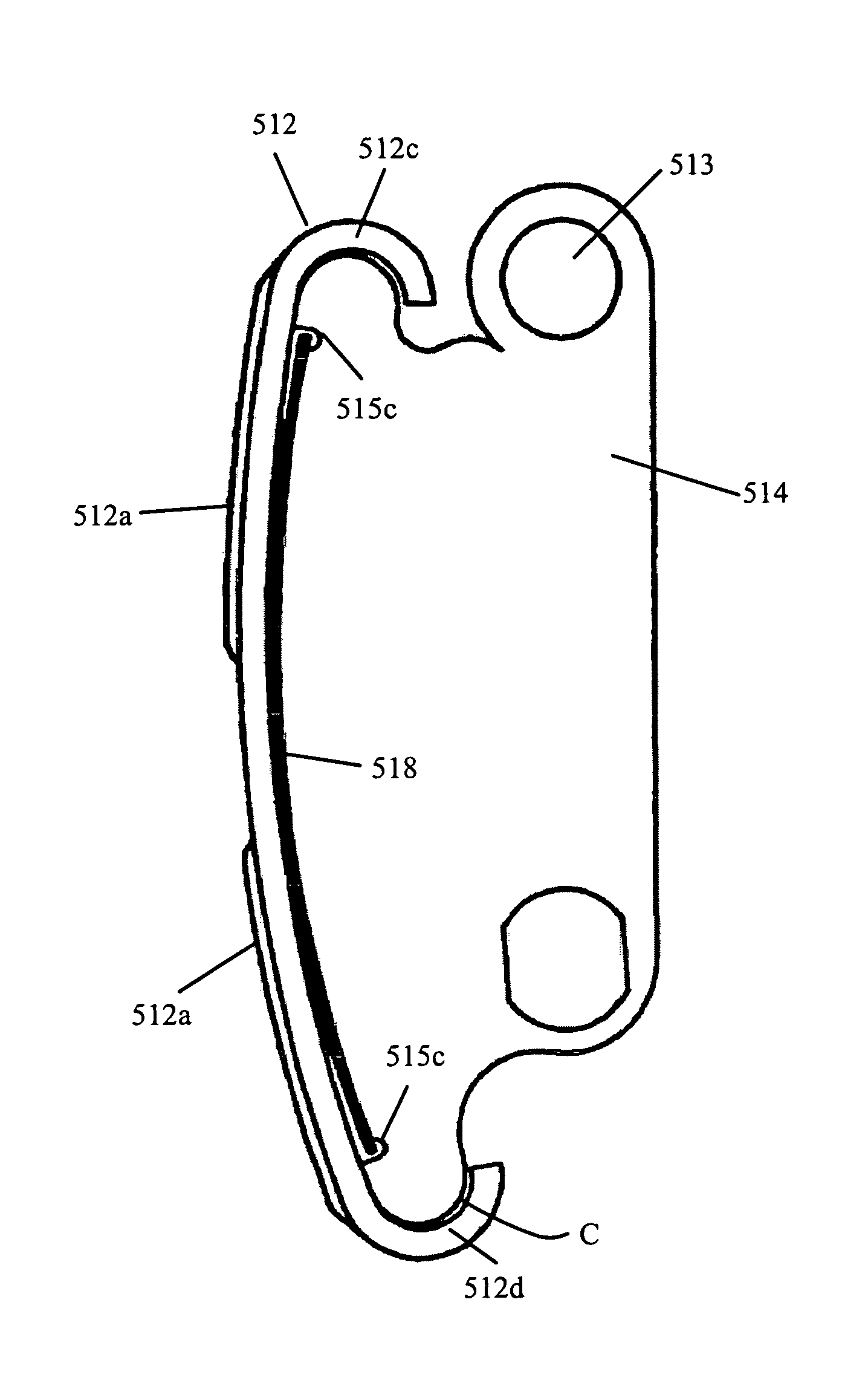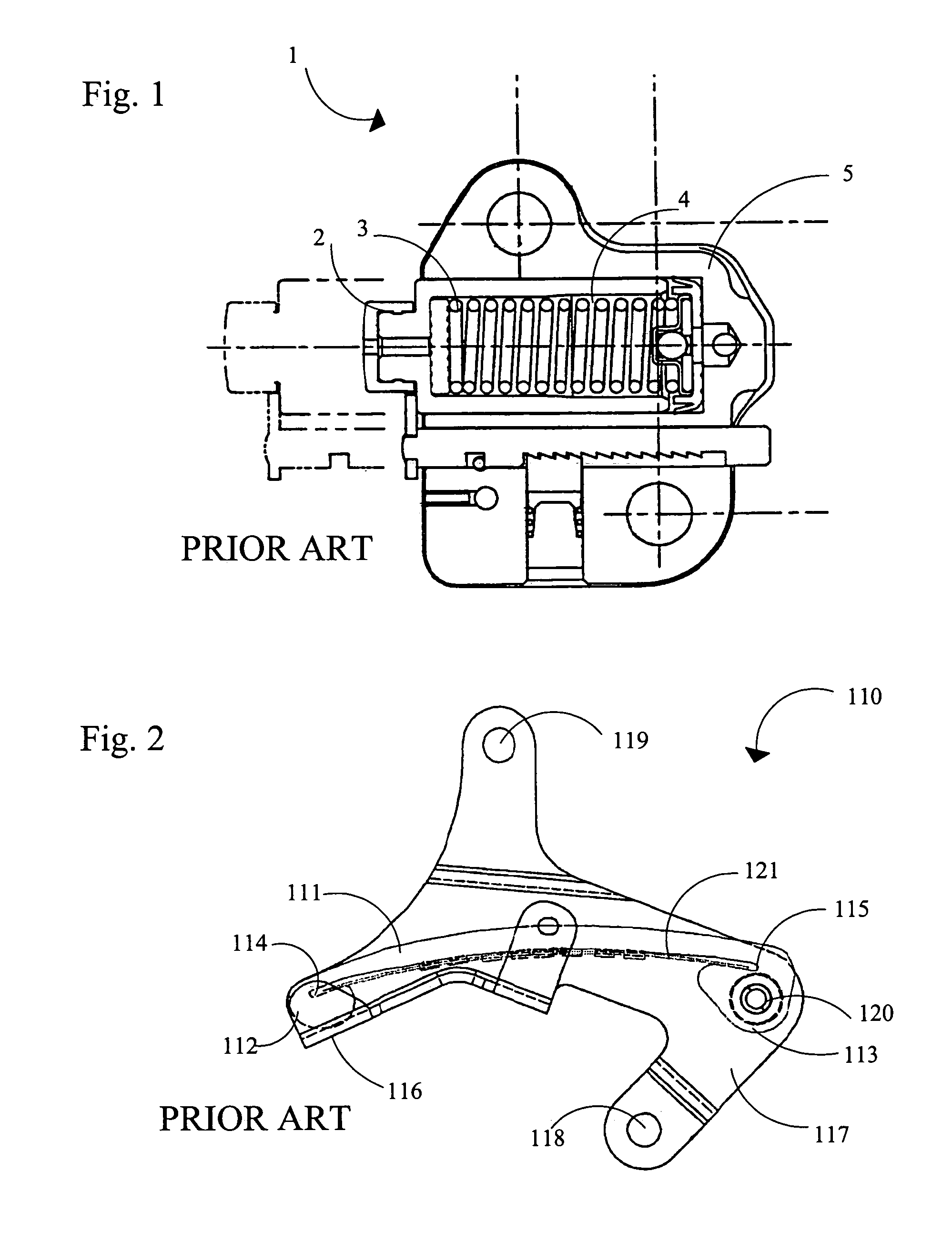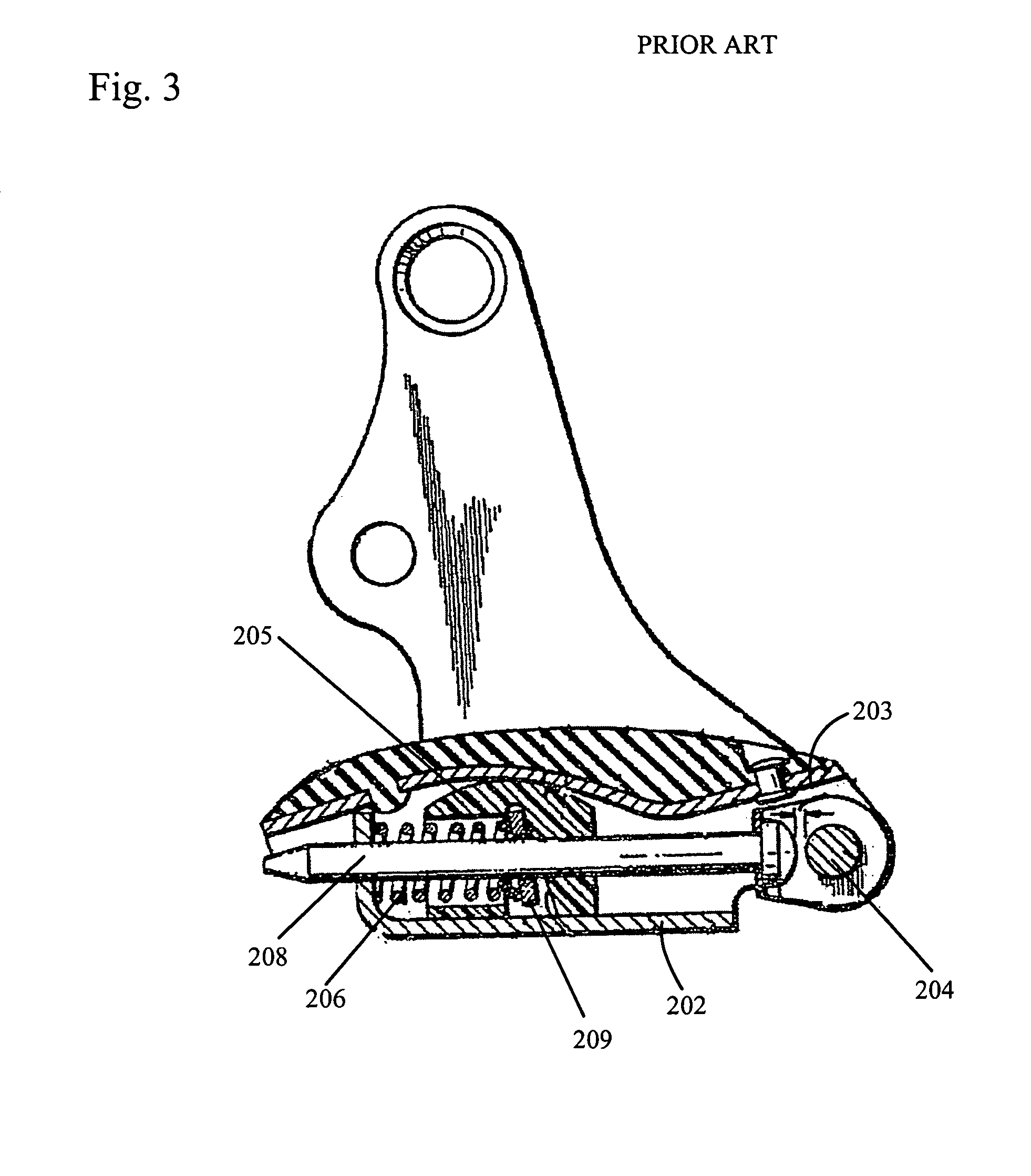Mechanical chain tensioner with compliant blade spring
a technology of blade springs and tensioners, which is applied in the field of tensioners, can solve problems such as chain tension fluctuations, damage or rendering the engine inoperative, and chain tension to vary between excessively high or low levels
- Summary
- Abstract
- Description
- Claims
- Application Information
AI Technical Summary
Benefits of technology
Problems solved by technology
Method used
Image
Examples
first embodiment
[0039]FIGS. 7 through 9 show the tensioner of a first embodiment with a new chain 500 wrapped around a drive sprocket and a driven sprocket (not shown). On the outside of the slack strand is tensioner 601.
[0040]Referring to FIGS. 9 and 12, a bracket body 514 has a surface 514c with a curved profile that is similar to the path of a new chain as controlled by the chain guide element 512. A channel cut groove 515 with sides 515a, a bottom 515b and recessed pockets 515c at either end of the groove 515 is found longitudinally along the length of the surface 514c. At least one blade spring 518, see FIG. 14, is somewhat flattened and placed in the channel cut groove 515. The blade spring 518 is a rectangle curled lengthwise in its free state and applied mostly uncurled in its assembled state, in the channel cut groove 515, between the bracket body 514 and the chain guide element 512. The recessed pockets 515c at either end of the groove 515 act as containment means and bearing surfaces for...
second embodiment
[0049]Alternatively, when two tensioners 601, 701 are present, as in the second embodiment, the spring rate of the blade springs may be different. In one example, to tension the chain slack on one side (the slack side) only, the chain guide element 512 on the tight strand would normally be against the stop 514c of the bracket body 514. In the event of a load reversal due to torsionals or the reverse rotation that can occur at stopping of an internal combustion engine, the slack and tight strands are reversed and the tensioner on the tight strand would respond by tensioning the slack and preventing the bunching of the chain at the driven sprocket that contributes to tooth jumping when normal chain rotation is resumed. The possibly weaker spring on the tight strand also softens the impact when the chain again resumes its normal tight path and chain guide element 512 reseats on bracket body 514.
[0050]In another example, to tension the chain slack on both strands equally, the blade spri...
PUM
 Login to View More
Login to View More Abstract
Description
Claims
Application Information
 Login to View More
Login to View More - R&D
- Intellectual Property
- Life Sciences
- Materials
- Tech Scout
- Unparalleled Data Quality
- Higher Quality Content
- 60% Fewer Hallucinations
Browse by: Latest US Patents, China's latest patents, Technical Efficacy Thesaurus, Application Domain, Technology Topic, Popular Technical Reports.
© 2025 PatSnap. All rights reserved.Legal|Privacy policy|Modern Slavery Act Transparency Statement|Sitemap|About US| Contact US: help@patsnap.com



